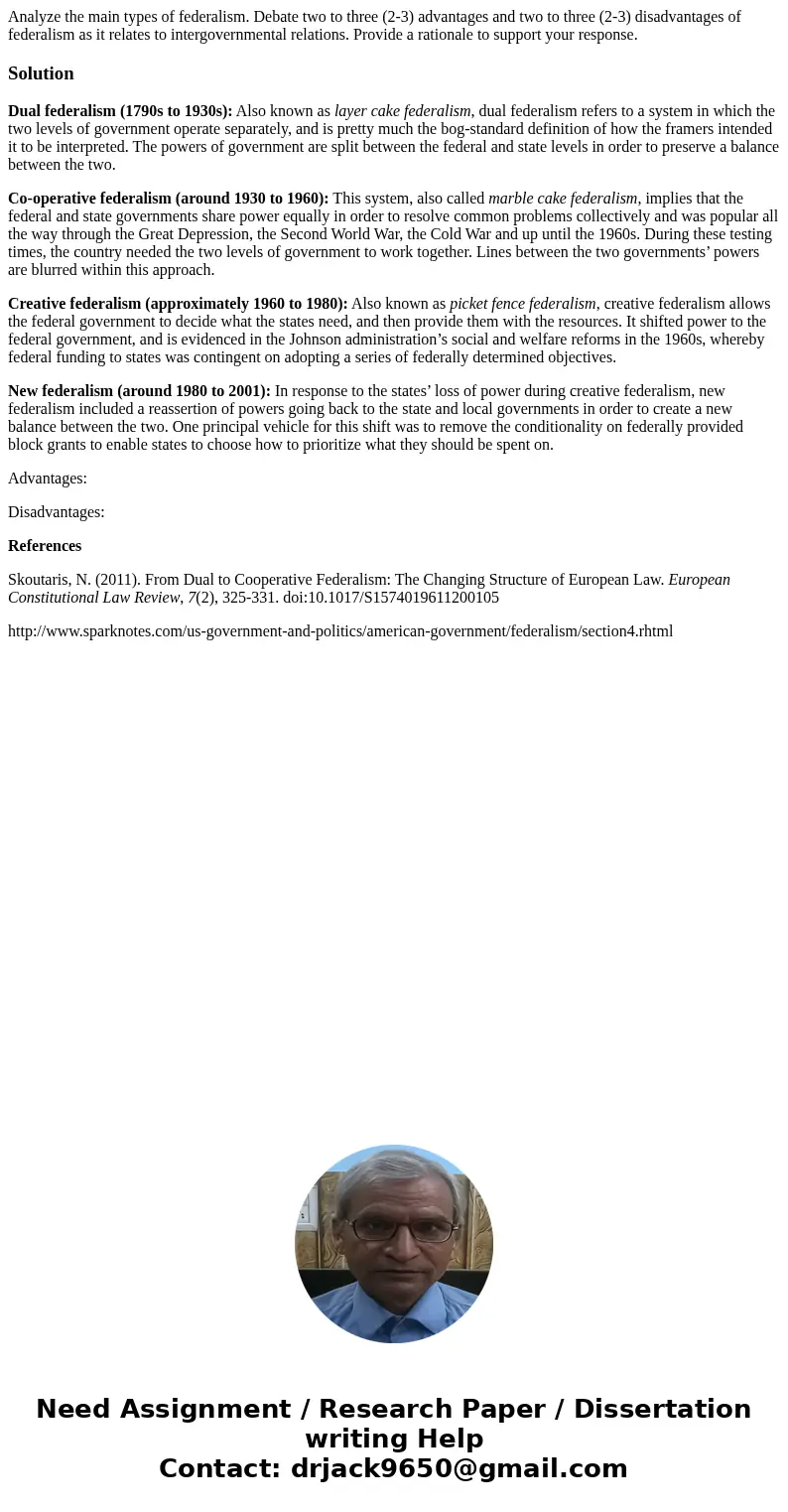Analyze the main types of federalism Debate two to three 23
Analyze the main types of federalism. Debate two to three (2-3) advantages and two to three (2-3) disadvantages of federalism as it relates to intergovernmental relations. Provide a rationale to support your response.
Solution
Dual federalism (1790s to 1930s): Also known as layer cake federalism, dual federalism refers to a system in which the two levels of government operate separately, and is pretty much the bog-standard definition of how the framers intended it to be interpreted. The powers of government are split between the federal and state levels in order to preserve a balance between the two.
Co-operative federalism (around 1930 to 1960): This system, also called marble cake federalism, implies that the federal and state governments share power equally in order to resolve common problems collectively and was popular all the way through the Great Depression, the Second World War, the Cold War and up until the 1960s. During these testing times, the country needed the two levels of government to work together. Lines between the two governments’ powers are blurred within this approach.
Creative federalism (approximately 1960 to 1980): Also known as picket fence federalism, creative federalism allows the federal government to decide what the states need, and then provide them with the resources. It shifted power to the federal government, and is evidenced in the Johnson administration’s social and welfare reforms in the 1960s, whereby federal funding to states was contingent on adopting a series of federally determined objectives.
New federalism (around 1980 to 2001): In response to the states’ loss of power during creative federalism, new federalism included a reassertion of powers going back to the state and local governments in order to create a new balance between the two. One principal vehicle for this shift was to remove the conditionality on federally provided block grants to enable states to choose how to prioritize what they should be spent on.
Advantages:
Disadvantages:
References
Skoutaris, N. (2011). From Dual to Cooperative Federalism: The Changing Structure of European Law. European Constitutional Law Review, 7(2), 325-331. doi:10.1017/S1574019611200105
http://www.sparknotes.com/us-government-and-politics/american-government/federalism/section4.rhtml

 Homework Sourse
Homework Sourse